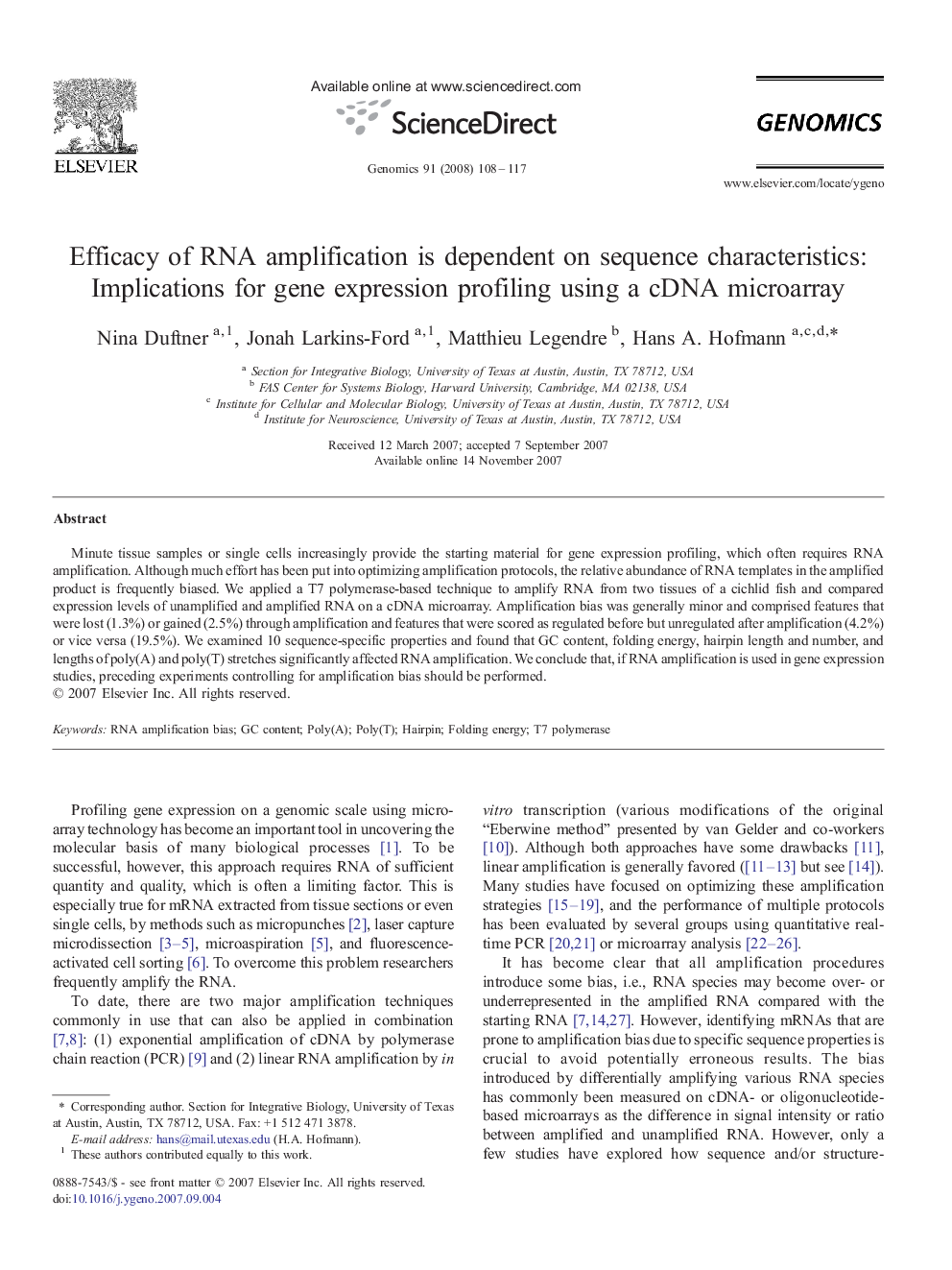| Article ID | Journal | Published Year | Pages | File Type |
|---|---|---|---|---|
| 2821046 | Genomics | 2008 | 10 Pages |
Minute tissue samples or single cells increasingly provide the starting material for gene expression profiling, which often requires RNA amplification. Although much effort has been put into optimizing amplification protocols, the relative abundance of RNA templates in the amplified product is frequently biased. We applied a T7 polymerase-based technique to amplify RNA from two tissues of a cichlid fish and compared expression levels of unamplified and amplified RNA on a cDNA microarray. Amplification bias was generally minor and comprised features that were lost (1.3%) or gained (2.5%) through amplification and features that were scored as regulated before but unregulated after amplification (4.2%) or vice versa (19.5%). We examined 10 sequence-specific properties and found that GC content, folding energy, hairpin length and number, and lengths of poly(A) and poly(T) stretches significantly affected RNA amplification. We conclude that, if RNA amplification is used in gene expression studies, preceding experiments controlling for amplification bias should be performed.
